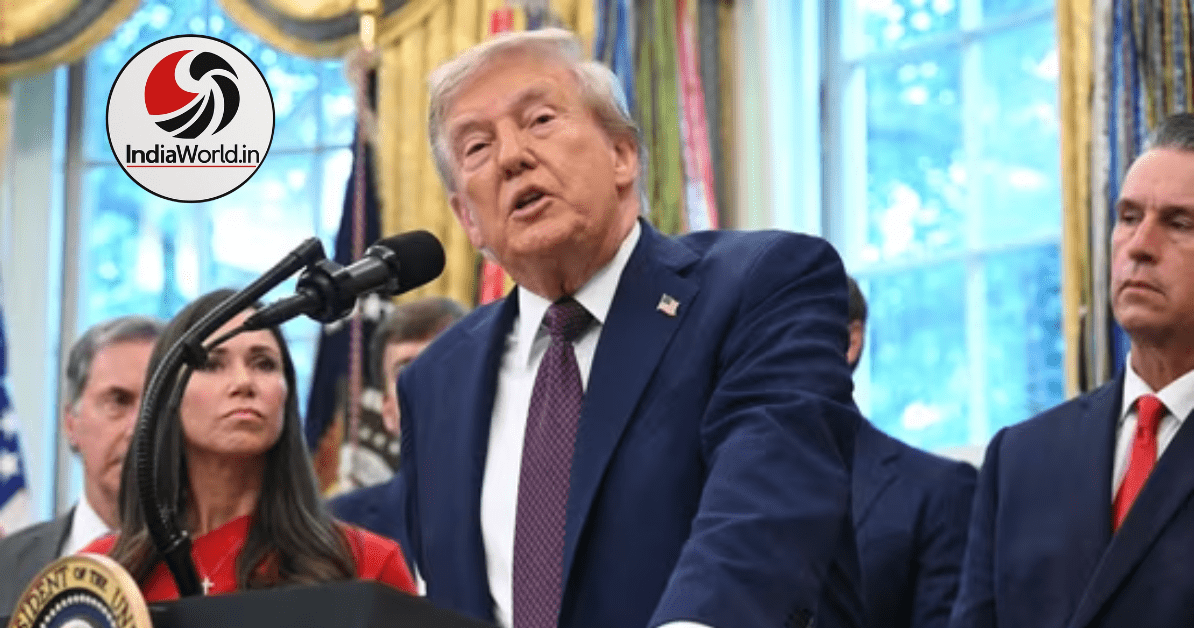Trump’s $100K H-1B Fee: America’s Talent Exodus Could Spark India’s Tech Renaissance
Donald Trump’s $100,000 H-1B visa fee is set to reshape global tech hiring. While the U.S. tightens its borders to foreign talent, India is gearing up to welcome back its brightest minds—engineers, scientists, doctors, and innovators—who now see opportunity in Bangalore, Hyderabad, Pune, and Gurgaon. This shift could accelerate India’s journey toward #ViksitBharat, turning America’s loss into India’s gain.
What Is the $100K H-1B Visa Fee?
In a dramatic policy shift, President Donald Trump signed an executive order mandating a $100,000 annual fee for every H-1B visa application—new or renewed. The goal? To prioritize American workers and discourage companies from hiring foreign professionals unless they’re “extraordinary.”
But this move doesn’t just affect visa applicants—it sends shockwaves through Silicon Valley, Wall Street, and the global tech ecosystem.
Why U.S. Innovation May Suffer
America’s tech dominance has long relied on global talent. From Indian engineers at Google to Chinese researchers at MIT, the U.S. has been a magnet for the world’s best minds. But this new fee could:
- Shrink the talent pool for startups and Big Tech
- Slow down innovation in AI, biotech, and software
- Push companies to offshore R&D to cheaper, talent-rich regions
- Discourage international students from pursuing U.S. degrees
According to Business Standard, over 70% of H-1B visa holders are Indian. That’s a massive chunk of the U.S. tech workforce now reconsidering their future.
India’s Strategic Response: A Talent Comeback
India isn’t just watching—it’s preparing. With the U.S. making it harder for foreign professionals to stay, India sees a golden opportunity to reverse brain drain and build its own innovation hubs.
🔧 Key Moves India Could Make:
- Boost R&D funding in AI, semiconductors, and biotech
- Expand startup incentives in Tier-1 cities like Bangalore and Pune
- Create fast-track visa and residency programs for returning professionals
- Partner with universities to absorb global talent into academia and labs
- Strengthen infrastructure in tech parks and smart cities
This isn’t just a reactive strategy—it’s a proactive leap toward becoming a global innovation powerhouse.
From Silicon Valley to Cyberabad: The New Migration
Cities like Hyderabad, Gurgaon, and Pune are already buzzing with startup energy. With returning talent, they could become the next Silicon Valley.
Imagine:
- Former Google engineers launching AI startups in Bangalore
- MIT-trained biotech researchers setting up labs in Hyderabad
- Data scientists building India-first platforms in Noida
This reverse migration could turbocharge India’s tech ecosystem, especially as global companies look for alternatives to U.S.-based teams.
Students and Scientists: India’s New Frontier
Trump’s visa fee doesn’t just affect workers—it hits students hard. Many Indian students in the U.S. rely on H-1B pathways after graduation. Now, with the cost of sponsorship skyrocketing, their American dream may end before it begins.
But India can turn this into a win:
- Offer scholarships and fellowships to returning students
- Create research clusters in IITs and IISc
- Launch innovation missions tied to national goals like #ViksitBharat
India’s finest minds—once destined for U.S. labs—can now build the future at home.
Impact on Indian IT Firms
Infosys, TCS, Wipro, and HCL have long relied on H-1B visas to send engineers to U.S. client sites. With the new fee, that model is under pressure.
What’s Changing:
- Fewer junior staff sent abroad
- More work shifted to offshore delivery centers
- Increased hiring of U.S. citizens for local roles
- Greater investment in GCCs (Global Capability Centers)
This could lead to leaner, more India-centric operations—and potentially higher margins.
Economic Upside for India
Let’s talk numbers. If even 50,000 Indian professionals return, that’s:
- ₹50,000 crore in annual salary circulation
- Thousands of new startups and patents
- Boosts in housing, education, and healthcare demand
- Strengthening of Tier-2 cities like Indore, Kochi, and Jaipur
India’s GDP could see a tangible bump from this talent infusion.
Finallly…
Trump’s $100K H-1B visa fee may be designed to protect American jobs, but it could end up exporting innovation to India. As global talent reconsiders the U.S., India has a rare chance to welcome back its brightest minds—and build the next generation of labs, patents, and unicorns.
The message is clear: America’s loss can be India’s gain. But only if India moves fast, smart, and boldly.










